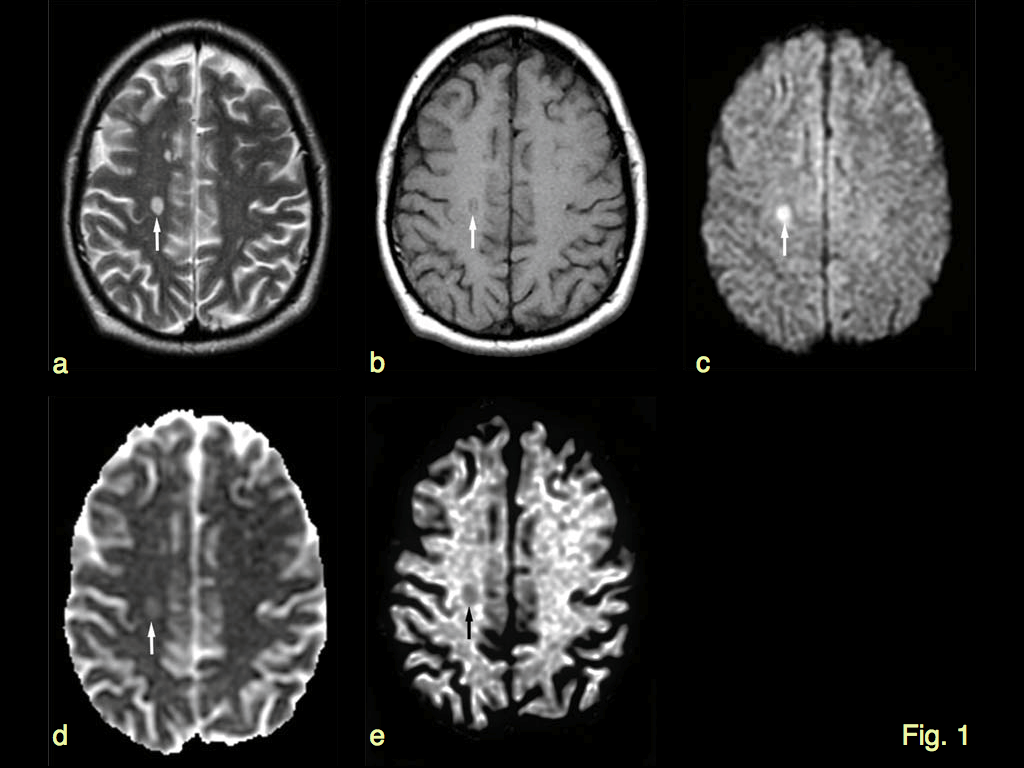


DWI and DTI derived parameters can be used as biomarkers in different pathologies.ĭiffusion-weighted imaging (DWI) has revolutionised stroke imaging since its introduction in the mid-1980s, but it has also become a pillar of current neuroimaging.In diffusion imaging, ADC is inversely proportional to tumour cellularity.DWI helps in the detection of intramural haematomas (arterial dissection).DWI is the most sensitive sequence in stroke diagnosis and provides information about prognosis.DWI includes EPI, TSE, RESOLVE or EPI combined with reduced volume excitation.We aim to review the main clinical uses of DWI, focusing on the physiological mechanisms that lead to diffusion abnormalities. Recently, there have been several technical improvements in DWI, leading to reduced acquisition time and artefacts and enabling the development of diffusion tensor imaging (DTI) as a tool for assessing white matter. DWI provides useful information, increasing the sensitivity of MRI as a diagnostic tool, narrowing the differential diagnosis, providing prognostic information, aiding in treatment planning and evaluating response to treatment. Diffusion abnormalities represent alterations in the random movement of water molecules in tissues, revealing their microarchitecture, and occur in many neurological conditions. Then we computed z-scores for each subject’s data and compared the groups using MANOVA with p value set at 0.05, corrected for multiple comparisons, considering group and visit as the independent variables.Diffusion-weighted imaging (DWI) has revolutionised stroke imaging since its introduction in the mid-1980s, and it has also become a pillar of current neuroimaging. To perform a quantitative analysis across the two groups, we first used the Johns Hopkins University tractography atlas to define 20 regions of interest (ROI), and the scans from the control subjects to create a reference database that included the mean and standard deviation values in each ROI.
#Medinria diffusion weighted imaging registration#
An affine linear registration routine part of FSL was also used to align the 32 images to the reference image.įor each DTI dataset, diffusion Fractional Anisotropy (FA), Mean Diffusivity (MD) or Apparent Diffusion Coefficient (ADC), and probabilistic tractography were estimated using FSL and the software package MedInria, with an FA threshold of 200, a minimum length for the detected fibers of 20 mm, and volume sampling every 5 voxels. Image distortions, resulting from susceptibility-induced and by eddy current-induced off-resonance fields, were corrected using routines from the software package FSL. Images were acquired on three different visits, two weeks and four weeks, respectively, after the first recording, using a 3.0 T. Thirteen acute mTBI patients 18-50 years of age and seven age- and sex-matched controls with no head injury were recruited from the emergency department of Huntington Memorial Hospital in Pasadena, CA. In this study we investigated whether Diffusion Tensor Imaging (DTI) could be used to assess recovery in patients with mild traumatic brain injury (mTBI).


 0 kommentar(er)
0 kommentar(er)
